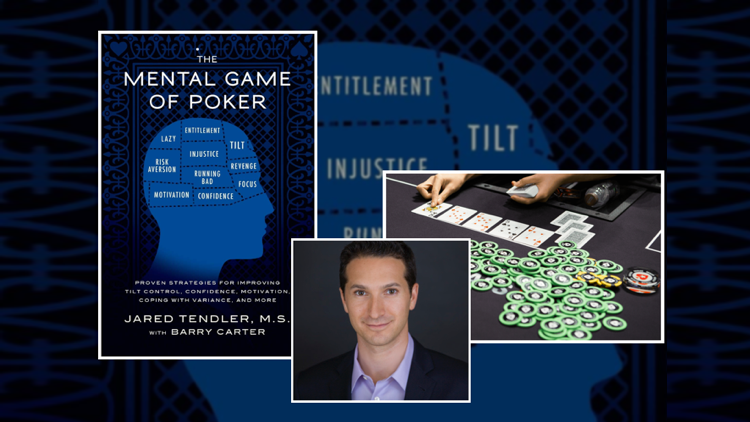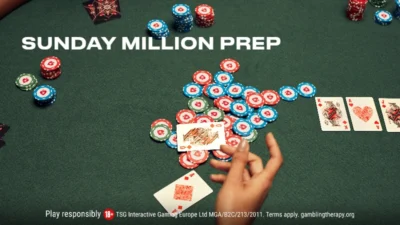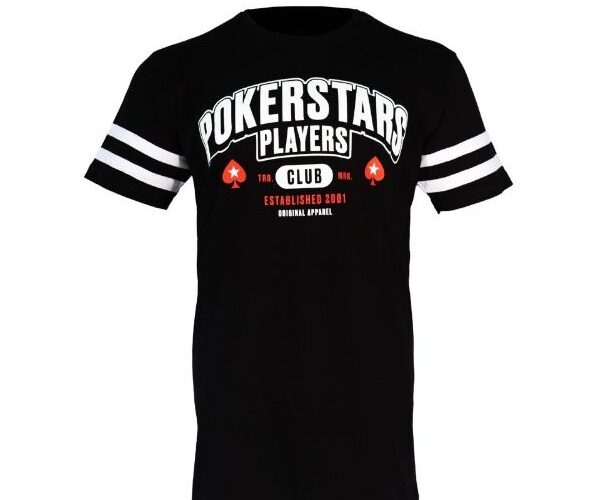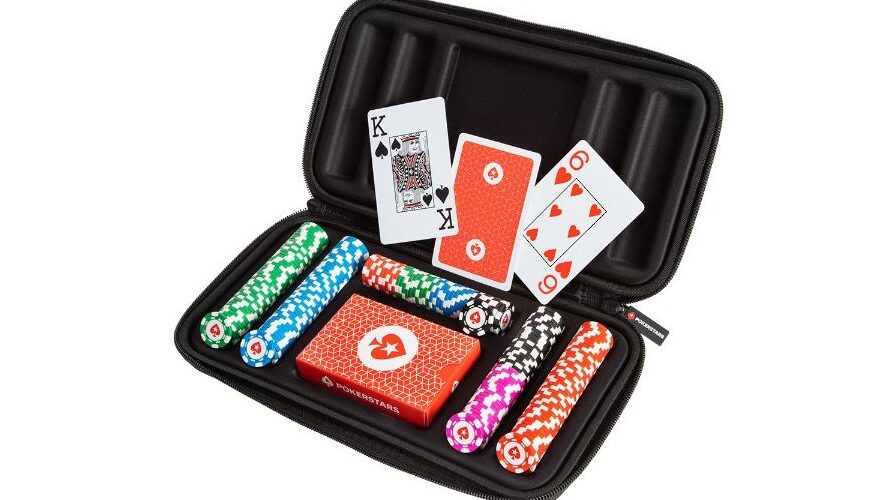One of the most frequently recommended poker books over recent years has been The Mental Game of Poker by Jared Tendler and Barry Carter.
In the book Tendler draws from years of experience as a mental game coach for golfers on the PGA and LPGA tours and for some of poker’s top players. Tendler’s coaching was highlighted recently in Maria Konnikova‘s best selling book The Biggest Bluff in a chapter where Konnikova describes meeting with the mental game coach.
One of the areas Tendler has been most lauded for in the poker community has been his ability to help players manage tilt. The following is an excerpt from The Mental Game of Poker in which he explores what causes different types of tilt and provides strategies for not letting tilt negatively affect your game.
Tilt = Anger + Bad Play
The definition of tilt as defined by conventional poker wisdom is too broad. Sometimes tilt just means playing badly; but it also can mean playing badly because of winning, or playing too loose, conservatively, or drunk. Tilt is hard to eliminate because the definition is so broad, it basically includes everything except playing great poker.
To fix tilt you have to know why you played badly. Only when you know the cause of your poor play can you devise a specific strategy to fix it. A strategy can only be as specific as the problem is defined. There are hundreds of things that cause you to play poorly, and the solution for each one requires a unique strategy. If you think being specific isn’t that important, consider the following comparison.
You might hear something along the lines of this from a player:
“I was doing fine, making some good reads and was up a buy-in; then I went on tilt and spewed off all my chips.”
In general, poker players don’t analyze tilt in the same way they would a poker hand. Instead, their analysis of tilt is the mental game equivalent of analyzing a hand like this:
“I’m in the small blind, it’s folded to the cut off who raises to $10, I have ace-queen suited, then I make a technical mistake and lose my stack.”
You may as well say, “I sat down at the table, yada yada yada, I lost.” All the relevant information you need to analyze the hand properly and find out why you lost a stack is left out. Without that information, there’s no way to actually improve your poker skill. Tilt is no different.
Spend enough time observing poker players and it becomes clear that the majority of references to tilt refer to players being frustrated, angry, or enraged. It’s for that reason this book defines tilt as an anger issue. That doesn’t mean the solution is to just not be angry. Thinking you can permanently flick tilt off like a switch is a fantasy. Plus, you’re assuming anger is the problem. Anger is the symptom — not the real problem….
Solving your tilt problem means both successfully managing tilt at the table while also working away from the table to resolve the cause of it. Both sides of the strategy are essential, so avoid falling into the trap of believing that strategies such as taking deep breaths, taking breaks, quitting, going to the gym, holding your breath, or positive thinking are permanent solutions. These strategies are best used to manage tilt until resolution eliminates it.
The goal of this chapter is to provide the background information you need to take tilt head-on and eliminate it from your game. Organized in successive sections, the information about tilt steadily becomes more detailed and specific. While the details at times may seem like overkill, mastery is all about the small details — just ask any high-stakes pro.
The Nature of Anger
Anger is the emotion that represents conflict. Conflict at a basic level is a disagreement. Conflict is most obvious when it’s between you and someone else, as happens when a car cuts you off, a friend acts like a drunken idiot, or someone berates you at the poker table for making a bad call. Anger is not inherently a bad thing. It can be an incredible motivator to take action, but it can also lead to major problems. The first key to solving your tilt problem is to understand the specific cause of your anger.
Conflict between you and poker, and you and other poker players, is much easier to notice than conflict between you and yourself — though not in a multiple personality disorder Me, Myself and Irene sort of way (a movie starring Jim Carrey). Players often describe feeling as if they are “fighting with themselves” trying to control tilt. This conflict is not made up. It’s real and exists between what a player knows consciously and the flaws that exist in their Unconscious Competence. Essentially, they are fighting to keep these flaws from causing tilt.
There are times when you’re able to win the fight and keep the beast in its cage; other times your conscious mind is overwhelmed by the intensity of your anger and you lose control. Losing control is often hard to wrap your mind around because logically you know how you should be thinking and why tilt is irrational, so why isn’t that enough? These are the three possibilities:
1. You have the correct logic and need to learn it to the level of Unconscious Competence.
2. Accumulated tilt rapidly overwhelms your mental defenses.
3. You think you have all the pieces of the logic puzzle to resolve the problem, but you actually don’t.
The vast majority of poker players relate best to the third answer, and the purpose of this chapter is to give you those missing pieces.
Accumulated Tilt
The anger that causes tilt is not just the result of one particular session or tournament; it can accumulate over time. When anger goes unresolved, it is carried over into the future. If you’ve ever insta-tilted as if a bomb went off, it’s because of accumulated tilt. Most commonly this happens during prolonged runs of bad variance. Each day it gets easier and easier to tilt because the anger from the day before carries over, much like a cup that’s steadily filling up with water. Each day some but not all of the water gets poured out; so the next time water goes in, it’s already at a higher level and needs less to overflow. In poker, you’re able to work through some of the anger that accumulates from playing, but if it’s not enough to reset your mind completely, you’ll reach your threshold faster the next time you play.
As they relate to emotional control, your thoughts are less powerful than your emotions themselves. No matter how mentally tough you are, accumulated tilt can overpower your ability to remain in control of your emotions. This means that the only way to deal with accumulated tilt is by working through your emotions away from the table….
The Tilt of Tilt
Anger is created in two places. The most significant form of anger comes from bad habits learned at the level of Unconscious Competence. For example, you hate losing and then get angry when you do; you believe you deserve to win because you’re a better player and get angry when a fish sucks-out; or you can’t stand bad drivers and lose your mind after getting cut off.
Anger is also created by recognizing that you’re angry: “the tilt of tilt.” Essentially, you’re angry because you’re angry –being pissed off because a mistake pisses you off, tilting because you let an opponent tilt you, or tilting because you have no idea how to fix your tilt problem.
These extra layers of mental anger are basically like adding another log onto a bonfire. While flawed logic in the Unconscious Competence started the fire, using your mind more efficiently is necessary to solve your tilt problem. The previous three chapters make it simpler for you to think through tilt. So simple, in fact, you might get tilted that you didn’t figure it out before. Players often don’t even realize that they’re adding fuel; they think it’s water.
The Benefit of Tilt
You read that right: Tilt can be a good thing. It can be used to improve your game. Of course, the ultimate goal is not to tilt at all, but since you can’t just wish the problem away, it’s better to use tilt to make you a better player….
When any emotion (in this case, anger) becomes more intense, it has a profound impact on the thinking part of your brain, eventually shutting it down completely. Thinking provides protection against flaws in your game that have not been corrected at the level of Unconscious Competence. Since it’s tough to know when poker skills have reached Unconscious Competence (since it’s unconscious), tilt gives you a perfect window into that part of your game. Reality can be harsh when you see how little of your game is actually mastered. However, in a game where success and profitability depend on accurate assessments of your game, tilt can be a good thing.
When you go on tilt, it’s easy to focus just on how badly you played. But you need to recognize that not everything goes to hell, you still do some things very well. If you still throw away marginal hands out of position, it means you’ve mastered the importance of position and good hand selection. Even though you might be playing too loose or tight while tilting, you may also be bet sizing well, or thin value betting in the right spots.
Of course, there’s the obvious flip side where a bad beat or constant aggression sends you over the edge and your greatest weaknesses show up. All of a sudden you may find yourself in no man’s land trying to bluff a donkey who clearly has a hand, demonstrating that perhaps you still don’t automatically know when to take your foot off the gas in a pot. If you find yourself calling too loose or chasing draws without the right odds, this could demonstrate a lack of deep understanding of the mathematical side of the game, or it could highlight an inner urge to gamble.
Although the mistakes that you make when on tilt are often basic, they can only happen because you have not mastered the correction. Anger plays a role for sure; if you didn’t become so angry, you’d be able to think as usual and avoid these mistakes. Nonetheless, the flaws in your poker skill need to be fixed, and tilt helps you to identify them….
Winner’s Tilt
Playing badly after winning a lot is not caused by anger. The mistakes made when winning are most often caused by positive emotions, and to a lesser degree the fear of losing money back. Winner’s tilt is caused by overconfidence shutting down the thinking part of the brain. Confidence is an emotion and too much of it produces mistakes for the same reason as anger. However, the underlying cause of anger is different than the cause of overconfidence and thus requires a different strategy to solve it….
Tilt Profile
Despite many commonalities, every player tilts in slightly different ways and for different reasons. One of the best times to understand your tilt better is immediately after a session where you tilted, because it’s so fresh in your mind. Of course, since tilt is so costly, your best bet is to spend time thinking about previous situations where you’ve tilted. Use the questions on the next page as a guide to begin analyzing and identifying the details of your tilt. If specifics are hard to find, that’s fine; everyone has a different starting point.
- What causes you to tilt? (Bad beats, losing to fish, running bad, etc.)
- What are the things you say to yourself out loud, or to other players, when frustration starts rising and when tilted?
- How do you know that you’re on tilt? What’s the first thing you notice?
- How does your body react to tilt? (Head gets hot, body is sweaty, heart races, fist is clenched, etc.)
- Can you identify the point when tilt starts shutting down your thinking?
- At what point do you take action to deal with tilt?
The answers to these questions, and whatever else comes to mind about tilt, form the baseline of your tilt profile. It is impossible to control something you don’t understand, so the goal at this point is to continue building your tilt knowledge base. While accuracy matters a lot when it comes to resolving tilt, simply increasing your knowledge often leads to at least some improvement. That may not mean you can control it at all times, but since increased knowledge or recognition is often the first of many small steps, you’re off to a solid start.
Having a baseline for your tilt problems is also important because it gives you a solid point of reference to evaluate progress in the future. Tracking your mental game is not like tracking poker stats. There are times when the intensity of your anger feels the same as before, but in reality, your mistakes aren’t as bad, you recognize tilt faster, you take action against tilt earlier, you quit a session sooner, and the thoughts in your head are less negative….
For many players, small improvements have to happen before they can take full control of tilt. A tilt profile that’s written out gives them the ability to see the small improvements that are normally hard to see. It’s critical to recognize these small improvements so they avoid falsely abandoning a strategy that is working in slower or less significant ways than they would expect.
Seven Types of Tilt
The following list briefly describes the most common types of tilt:
- Running Bad Tilt: The tilt that’s caused by a run of bad cards is not actually a unique type of tilt. Instead, one (or more) of the other types of tilt happens so frequently in such a short amount of time that your mind can’t reset itself before the next time you play. As a result, tilt builds up and hangs over your head like a dark cloud.
- Injustice Tilt: Bad beats, coolers, and suck-outs are prime examples of triggers that make you feel cursed and make poker feel unfair.
- Hate-losing Tilt: Many players hate losing even though they realize how much variance impacts results in the short run. Wanting to win is not the problem — the problem is how you handle the inevitable losses.
- Mistake Tilt: Making mistakes is frustrating for many logical reasons; these reasons just happen to be flawed because of inaccurate views about learning.
- Entitlement Tilt: Classic Phil Hellmuth tilt is caused by believing that you deserve to win for X, Y, or Z reason. Winning is a possession and you tilt when someone undeserving takes it from you.
- Revenge Tilt: Disrespect, constant aggressive action, and opponents thinking they’re better than you are just a few of the reasons why you seek vengeance at the table.
- Desperation Tilt: The urge to win your money back and get unstuck is so strong, it makes you play monster sessions, force the action, and jump up in stakes.
This is an excerpt from The Mental Game of Poker by Jared Tendler and Barry Carter, one of the most critically acclaimed poker books of the last ten years. PokerStars Pro Lex Veldhuis calls it the “best poker book ever written.”
Back to Top











